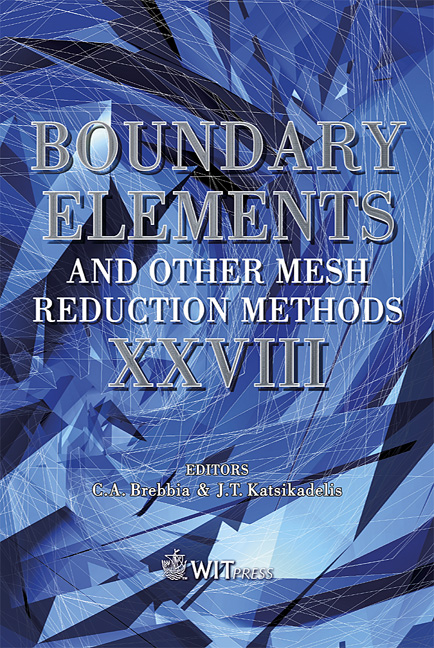Boundary Element Formulation Applied To Multi-fractured Bodies
Price
Free (open access)
Transaction
Volume
42
Pages
11
Published
2006
Size
601 kb
Paper DOI
10.2495/BEM060321
Copyright
WIT Press
Author(s)
E. D. Leonel, O. B. R. Lovón & W. S. Venturini
Abstract
In this work, the performance of the boundary element method applied to multi-fractured bodies is analysed. The algebraic equations are written either using only displacement equations for collocations defined along the crack surfaces keeping a very small distance between them to avoid singularities or using displacement and traction representations. Adaptive schemes are employed to adjust the crack advance direction and to refine the elements near the tip. A remeshing procedure is also adopted to appropriately reduce the boundary approximation influence for elements distant enough from the crack tip. Examples of multi-fractured bodies that are loaded to the rupture are shown to illustrate the applicability of the proposed scheme. Keywords: boundary elements, linear fracture mechanics. 1 Introduction Analysis of fractured solids is a very common problem in engineering. The BEM has demonstrated to be the most accurate numerical technique for the analysis of this kind of problem. In fracture mechanics analysis the dimensionality reduction of BEM is clear, as only boundary discretization will be required. Moreover, internal points are needed only to approximate the crack line, but without requiring remeshing. Cruse [1] was the first to use boundary integral methods to study cracks. After 35 years of use that attempt the method has been improved and has become the most efficient numerical technique to model linear and non-linear cracks. During these four decades many formulations have been tested with accurate results, as can be seen in a state of art published by Aliabadi [2]. Among these works we have to point out some interesting works that are often used to extract stress
Keywords
boundary elements, linear fracture mechanics.





